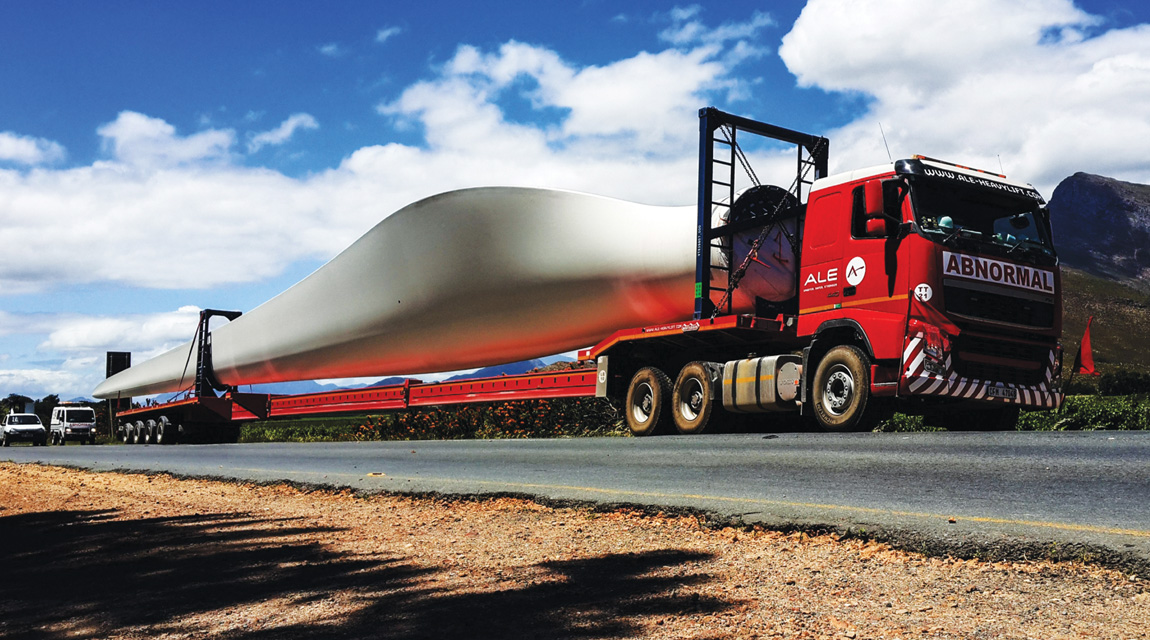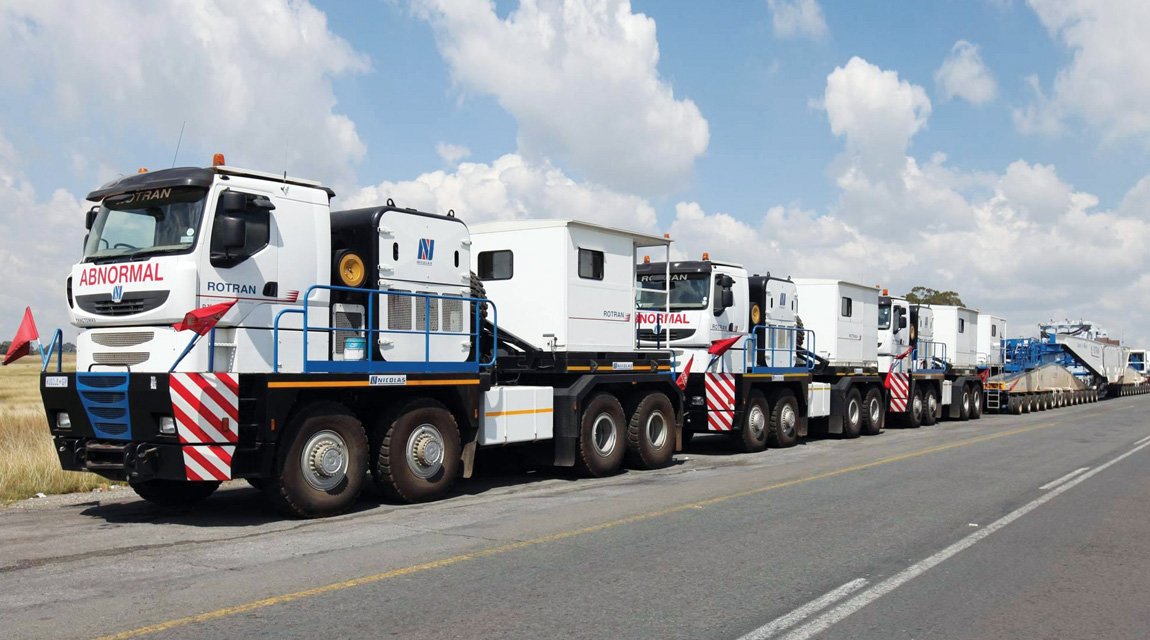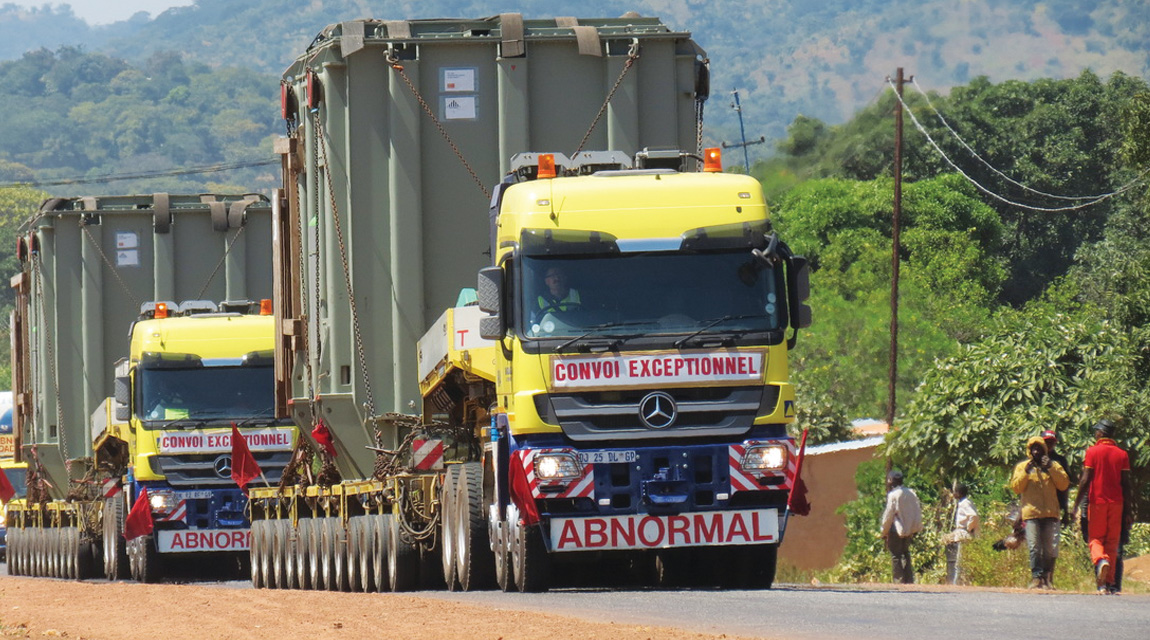From specialised to Leatherman trailers

GAVIN MYERS explores the transport of specialised, oversized and abnormal loads.
In a world where trailers are designed to fulfil a dedicated role, it’s interesting to learn that more and more operators are interested in multi-use trailers…
“Many clients want ‘Leatherman trailers’ – they come with some interesting requests for trailers that can do multiple jobs. Most of the time, with a bit of research and development, we can accommodate them and design the trailers accordingly,” comments York Zonneveld, owner of Krugersdorp-based Cobalt Trailers.
While operators today undoubtedly need to work smarter and harder, operating in the specialised transport arena means following the bible: the TRH11 that is.
TRH11 governs the transport of specialised loads, which consists of anything outside of the normal legal dimension and weight parameters – meaning if it is wider than 2,6 m; longer than 18,5 m with horse and single trailer, or 22 m when considering a super link; as well as being higher or heavier.
Abnormal-load transporters need a permit for every abnormal load that is transported, and, in extreme cases, a police escort.
Christo de Clerk, Tridec and fleet manager at component supplier Jost South Africa, explains: “Two axles will be limited to 18 t and three axles a maximum of 24 t. One tonne per axle is lost in a tri-axle trailer, which is why links typically have two trailers on two axles because that allows for
36 t. When running super singles only eight tonnes are allowed per axle, regardless of the configuration.
“If more axles are added, you enter abnormal territory. Typically, it is possible to load seven tonnes per axle on a four-axle trailer. However, according to our weigh-bridge formula, the footprint of the trailer also affects the maximum load allowed, so, if the axles can be spread out, some payload could be gained due to a larger footprint,” he says.
This point leads us on to a common sight on many abnormal trailers – the fact that they are fitted with steering axles.

De Clerk continues: “Steered axles are essential to gain payload. Axle spacing (unsteered) is limited, because of the heavy load applied to the suspension when turning. South African law states that if a trailer’s wheelbase exceeds 14,5 m, it has to be steered. Should a trailer have five or more axles, all axles have to be steered. This will also be abnormal.”
Troy Smallwood, operations director at Transcor – a company well known for the transportation of abnormal loads – explains the implications of specialised transport: “The most important information is available in the TRH11. Dimensional and mass permits mean that, where necessary, our trucks will be routed to avoid overhead bridges. We consider safety as top priority.”
Transcor makes use of step decks, low beds and multi-axle trailers. These are all specially designed to be wider and contain more axles and tyres. They also use stronger beams and larger kingpins to accommodate the load type.
“Using Goldhofer software we build up a trailer according to the required specifications of each load, as well as indicating the correct loading positions. Weighing particular loads ensures an even distribution of mass throughout the trailer,” Smallwood comments.
While Zonneveld might receive the odd request for “Leatherman trailers”, building your typical step-deck, low-bed, multi-axle, goose-neck or extendable trailer requires specific expertise.
“Trailers for specialised applications are all different. The chassis differ and are designed and built accordingly. We use high-tensile steel for the chassis, but it doesn’t pay to use this on the decks,” he says.
Interestingly, the designs change quite regularly… “The trailer designs change every 18 months or so. Trends in Europe and America are often investigated and we try to see how those techniques can be incorporated locally to do the work more efficiently. At Cobalt, we conduct research and development often to see how to get around certain problems – like lowering chassis, for example.”

It would, therefore, be fair to assume that specialised trailers require specialised maintenance, which is something on which our three specialists agree.
“These trailers work hard,” says Zonneveld. “Maintenance requirements are, therefore, higher …
they have to be looked after. Many abnormal transporters have their own, decent workshops that are well equipped; they can’t afford to take the risk of a trailer breakdown when moving such specialised loads.”
Smallwood adds that operators have to adhere to regular service intervals, continuous maintenance and annual Certificate of Fitness and licence renewals.
From a components point of view, De Clerk adds that, in the case of an abnormal vehicle, there may be additional hydraulic systems that require maintenance. “These need to be checked for leaks and safe operation,” he says.
As one might expect from such a specialised industry, it is not without its foibles. The first of these is the lack of experienced drivers. De Clerk notes: “Abnormal-vehicle drivers need additional paperwork to operate these vehicles legally – and they are in short supply.
“A big contributing factor to this is the minimum wage. Operators used to have drivers and assistants, who were the future drivers. You could call it an apprenticeship for future drivers and South Africa used to have a healthy inflow of experienced drivers as a result.
“These days operators can’t afford to pay drivers and assistants. Therefore, people who do obtain licences are inexperienced and might find it hard to find employment. This also means that experienced drivers are in short supply. It is a vicious circle: fewer people are being employed and the ones trying to get in are finding it more and more difficult to get a job to gain experience,” he says.
There is also the problem of bureaucracy. Another respondent, who requested to remain anonymous, points out: “There is a lot of red tape from the Department of Transport (DoT) holding back the industry’s development.
“It is difficult for a trailer manufacturer to simply get approval in principle on a job design requested by a transporter. Because of this, transporters sometimes make other arrangements to import trailers instead, as they can’t wait too long (sometimes up to two years) or they will lose the contract.
“Without this unnecessary red tape, trailer manufacturers could build more trailers and transporters could transport more loads, which would all be good for the economy. Customers are prepared to spend the money locally. The DoT needs to work with the industry, not hold it up … it is a constant battle.”
It’s no wonder “Leatherman trailers” are becoming a thing…
Published by
Focus on Transport
focusmagsa




